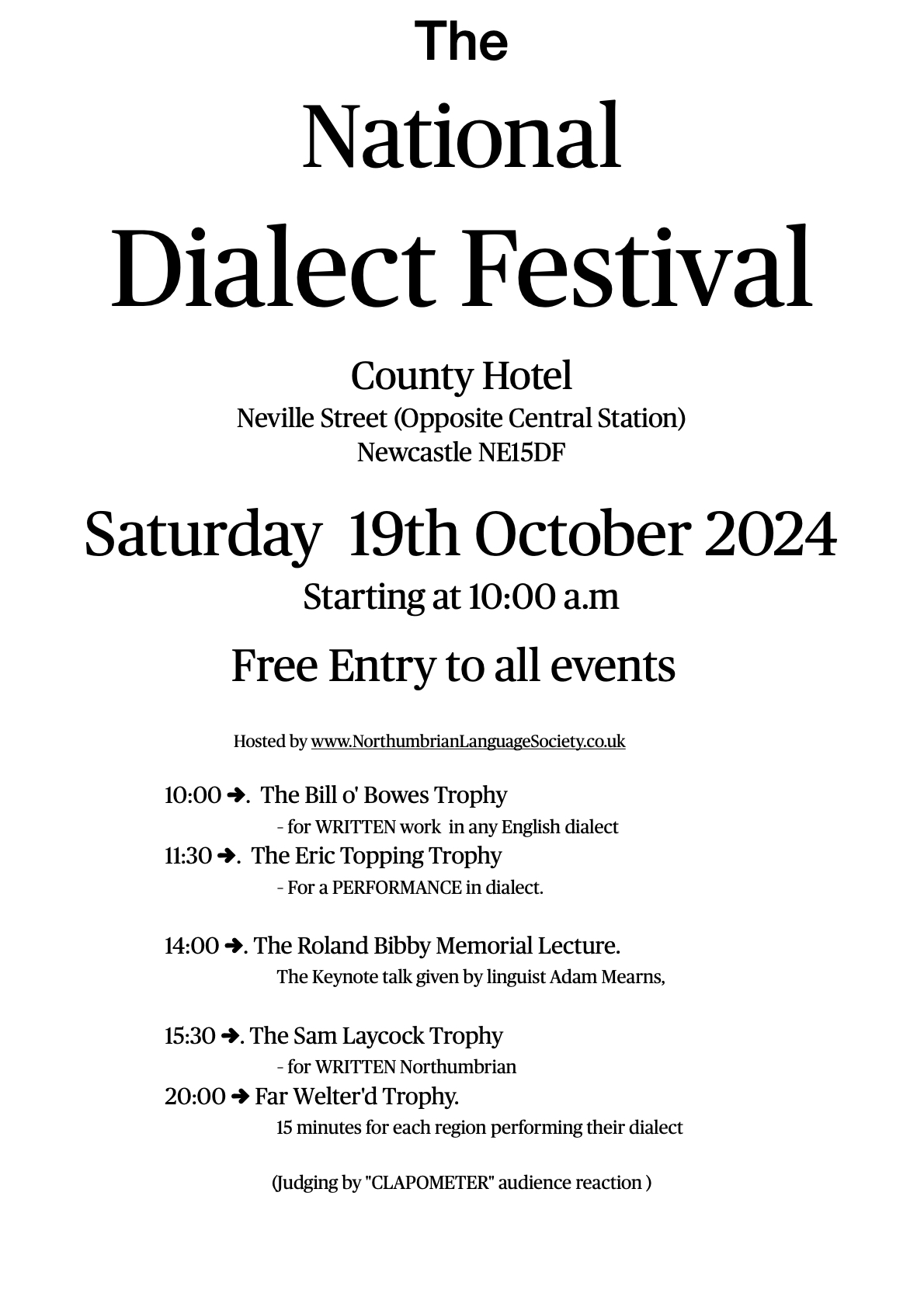The Development of the Northumbrian Language
The Anglians who settled in this part of the country came from the area around the Danish/German border, and spoke an Old Germanic dialect. It is generally accepted now that they generally settled amongst the native, Celtic-speaking British peoples rather than displacing them completely, so that there would have been some mixing of people, languages and dialects. The Anglians were the dominant group however, and this is reflected in the language which is still predominantly Anglian, though with some Celtic influences.
The growth of the unified kingdom of Northumbria spread the dominant Anglian language throughout what is now northern England and southern Scotland. This is the period of the great Northumbrians such as Oswald, Aidan, Cuthbert and Bede, whose influence took the language all over Britain and further afield into Europe. These years have been referred to as “Northumbria’s Golden Age”, and it is significant that, as Northumbria’s political power declined, its cultural influence grew steadily. It should always be remembered that our greatest contribution to the development of British society has been in the fields of religion, education, art and literature, and more recently, industry and commerce.
Throughout this period, despite the wars and political intrigue, there was a great mixing of peoples and cultures. As well as the Anglians and the Celts, many Scots from Ireland settled in the region, particularly in Dumfries and Galloway, and members of the Northumbrian ruling dynasties regularly lived in Scotland and Ireland for part of their lives, either in exile, or as part of their education or a political alliance. The record shows that many of the ruling elite spoke more than one language, and this familiar contact with other languages contributed positively to the development of Northumbrian.
The Northumbrian language has been spoken continuously throughout the area for more than 1,400 years, but like all languages, it has undergone significant changes in that time. The first happened during the Viking invasions which began in 793 with the raid on Lindisfarne. Within a century, Northumbria as a unified kingdom had ceased to exist. The Danes settled mainly in the south of the kingdom, in what is now Yorkshire, and their dominance led to the absorption of many Scandinavian words into the language, which effectively took it in a different direction until it lost its uniqueness and became the Yorkshire dialect of today.
Shortly after this shock, the political collapse of the kingdom, and the emergence of a Scottish kingdom in the north led to the gradual loss of the Lothians. Over the years, this has resulted in the language there also taking a separate route into Lowland Scots, which, like the Northumbrian of Yorkshire, is part of the Northumbrian family of languages, but with its own distinct dialect and vocabulary. Applying the comprehensibility test mentioned earlier to Lowland Scots however, makes it possible to state that Scots is now as distinct a language as Northumbrian.
In the northeast of England, the Vikings never settled north of the Tees, nor did the Scots venture very far south of the Tweed, so that Northumbrian was left alone to continue its own development. The border skirmishes of the middle ages, and the neglect of the region by both Edinburgh and London, meant that the people were more or less left to their own devices, and in this situation the language survived many of the centralising tendencies that were taking the English spoken in the rest of the country towards the standard format we know today.
The days of the border reivers, so destructive of the economic and social fabric of the region, actually enabled the language to survive in a much purer form than would otherwise have been the case. This was the second decisive period in the language’s development.
The third and final decisive period began in the middle of the nineteenth century, and continues today. This was the period of the great erosion of the language as a result of the spread of education and the rise of the modern state. These two developments have created the British nation, with a common language, standard English. As society progressed in terms of transport and communications, people were able to travel more easily. The more remote parts of our region were gradually brought into the mainstream through the railways, the development of modern roads and other methods of transport, through the growth of towns and industry, mass employment in factories, and the spread of universal primary education.
All of these developments brought native Northumbrian speakers into regular contact with other forms of English, particularly standard English; and the advent of compulsory schooling for the masses accelerated this into an almost unstoppable force for conformity of speech. The final blow was the invention of the BBC, which promoted received pronunciation as the only acceptable way of speaking English, and people who wanted to get on were encouraged to suppress their regional dialects and accents which were often regarded as “common” or “slang”. This ignorant attitude persists today. Finally, the development of radio and television, and other forms of mass communication and entertainment, is rapidly leading to the establishment of a universal culture based on American English, which is leading to the further erosion of regional accents and dialects.
Where does our language go next? Click here.
Share this content

